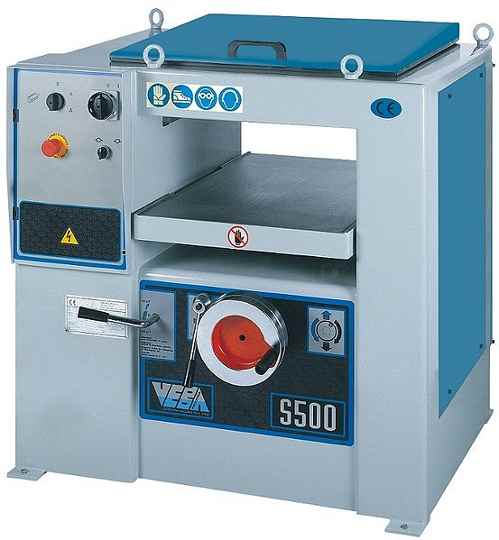 |
|||||
Graphical Construction Glossary >> Tools. >> Power Tools >> Thicknesser Planer
Top of the range models now often use helical cutter heads. This means that instead of the cutters hitting the timber square on, the cutters have a more slicing motion that reduces shudder and tear out around knots and grain reversals. I equate it using a hand smoothing plane with an angled slightly sideways action when dressing off knotty timber. The shavings come of in a spiral. When dressing rough saw timber it is common to give it a straight face side and face edge on a jointer planer and then the thicknesser takes over to get the final width and thickness. Quick Tip It is almost never that the full width of the planer head is used on one piece of wood, so to maintain an even wear on the cutters it is normal to plane a series of narrower pieces staggered through the machine, one left, one right, one centre, that sort of thing. Never just use one side, that dulls the blade unevenly, but also then the top pressure and feed rollers will take on a lean and the feed will be uneven. If only one piece is being worked on then use the middle of the machine. If you didn't find exactly what you are looking for try this search tool that will search the site and the web. "What can be added to the happiness of a man who is in health, out of debt, and has a clear conscience? "When we build, let us think that we build for ever."John Ruskin 1819-1900 |
Hire Equipment  Furniture Fittings - Architectural Hardware - Electronic Locking Systems - Technical Hardware BuilderBill sponsorship Glossary Pages.Roof Glossary and Roofing Formwork Glossary and other tempory work. Hand Tools Glossary Power Tools Glossary Asbestos Glossary Woodwork Glossary Stair Glossary Concrete Glossary Masonry Glossary doors Glossary BuilderBill Books Building Maths  Stair Design  Asbestos Book |
||||
|
|
|||||
|
Please Note! The information on this site is offered as a guide only! When we are talking about areas where building regulations or safety regulations could exist,the information here could be wrong for your area. It could be out of date! Regulations breed faster than rabbits! You must check your own local conditions. Copyright © Bill Bradley 2007-2012. All rights reserved. |
|||||
